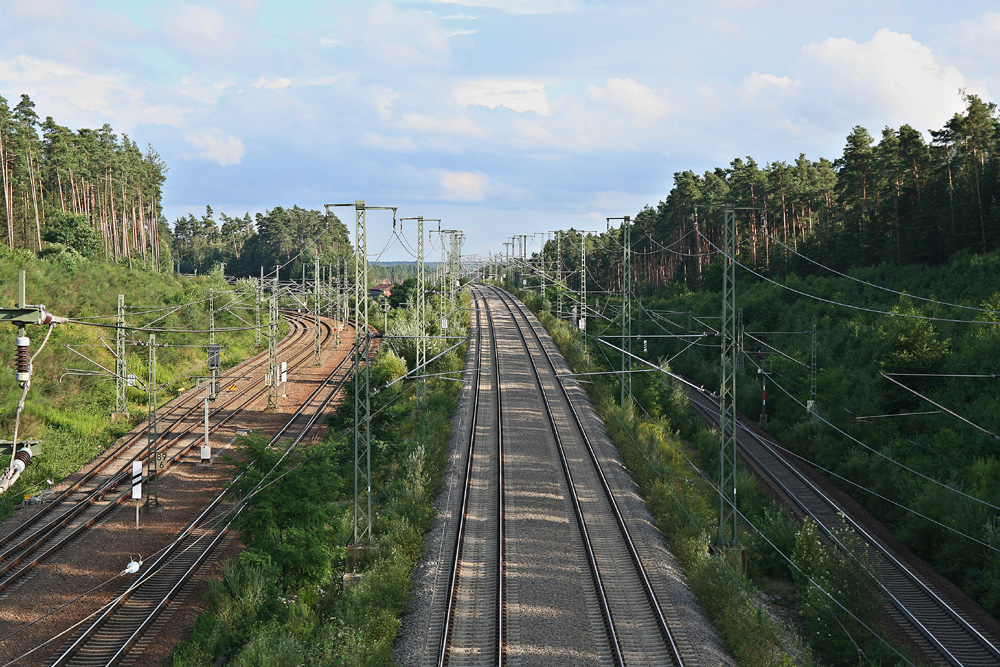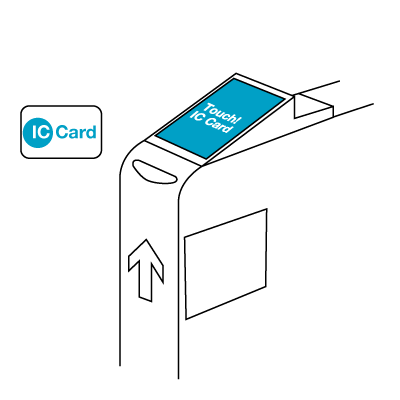|
Iwakura Station (Aichi)
270px, Track layout is a railway station in the city of Iwakura, Aichi Prefecture, Japan, operated by Meitetsu. Lines Iwakura Station is served by the Meitetsu Inuyama Line, and is located 9.7 kilometers from the starting point of the line at . Station layout The station has two island platforms connected by an underground passage. The station has automated ticket machines, Manaca automated turnstiles, and is unattended. Platforms Station history Iwakura Station was opened on 6 August 1912. From September 1920 to April 1964, a spur line A branch line is a secondary railway line which branches off a more important through route, usually a main line. A very short branch line may be called a spur line. Branch lines may serve one or more industries, or a city or town not located ... connected the Inuyama Line with Komaki Station. A new station building was opened in September 1965 and was expanded from 2004 to 2005. Passenger statistics In fiscal 2017, the station w ... [...More Info...] [...Related Items...] OR: [Wikipedia] [Google] [Baidu] |
Aichi Prefecture
is a Prefectures of Japan, prefecture of Japan located in the Chūbu region of Honshū. Aichi Prefecture has a population of 7,461,111 () and a geographic area of with a population density of . Aichi Prefecture borders Mie Prefecture to the west, Gifu Prefecture and Nagano Prefecture to the north, and Shizuoka Prefecture to the east. Nagoya is the capital and largest city of the prefecture. Overview Nagoya is the capital and largest city of Aichi Prefecture, and the Largest cities in Japan by population by decade, fourth-largest city in Japan. Other major cities include Toyota, Aichi, Toyota, Okazaki, Aichi, Okazaki, and Ichinomiya, Aichi, Ichinomiya. Aichi Prefecture and Nagoya form the core of the Chūkyō metropolitan area, the List of metropolitan areas in Japan, third-largest metropolitan area in Japan and one of the largest metropolitan areas in the world. Aichi Prefecture is located on Japan's Pacific Ocean coast and forms part of the Tōkai region, a subregion of the ... [...More Info...] [...Related Items...] OR: [Wikipedia] [Google] [Baidu] |
Railway Stations In Japan Opened In 1912
Rail transport (also known as train transport) is a means of transport using wheeled vehicles running in tracks, which usually consist of two parallel steel rails. Rail transport is one of the two primary means of land transport, next to road transport. It is used for about 8% of passenger and freight transport globally, thanks to its energy efficiency and potentially high speed.Rolling stock on rails generally encounters lower frictional resistance than rubber-tyred road vehicles, allowing rail cars to be coupled into longer trains. Power is usually provided by diesel or electric locomotives. While railway transport is capital-intensive and less flexible than road transport, it can carry heavy loads of passengers and cargo with greater energy efficiency and safety. Precursors of railways driven by human or animal power have existed since antiquity, but modern rail transport began with the invention of the steam locomotive in the United Kingdom at the beginning of the 19th c ... [...More Info...] [...Related Items...] OR: [Wikipedia] [Google] [Baidu] |
Komaki Station
270px, Track Layout is a railway station in the city of Komaki, Aichi Prefecture, Japan, operated by Meitetsu. Lines Komaki Station is served by the Meitetsu Komaki Line, and is located 9.8 kilometers from the starting point of the line at . Station layout The station is an underground station with one island platform and one side platform, located in the basement of the Meitetsu Komaki Hotel. The station has automated ticket machines, Manaca automated turnstiles and is staffed. Platforms Station history Komaki Station was opened on September 23, 1920. The station was relocated underground in 1989. From 1991-2006, it was also the terminal station on the Peachliner people mover project. Passenger statistics In fiscal 2017, the station was used by an average of 11,360 passengers daily. Surrounding area *Meitetsu Komaki Hotel *Komaki High School *Komaki Daiichi Hospital See also * List of Railway Stations in Japan * Peachliner The Peachliner, formally the was a people ... [...More Info...] [...Related Items...] OR: [Wikipedia] [Google] [Baidu] |
Spur Line
A branch line is a secondary railway line which branches off a more important through route, usually a main line. A very short branch line may be called a spur line. Branch lines may serve one or more industries, or a city or town not located on a main line. Branch lines may also connect two or more main lines. Industrial spur An industrial spur is a type of secondary track used by railroads to allow customers at a location to load and unload railcars without interfering with other railroad operations. Industrial spurs can vary greatly in length and railcar capacity depending on the requirements of the customer the spur is serving. In heavily industrialized areas, it is not uncommon for one industrial spur to have multiple sidings to several different customers. Typically, spurs are serviced by local trains responsible for collecting small numbers of railcars and delivering them to a larger yard, where these railcars are sorted and dispatched in larger trains with other ... [...More Info...] [...Related Items...] OR: [Wikipedia] [Google] [Baidu] |
Turnstile
A turnstile (also called a gateline, baffle gate, automated gate, turn gate in some regions) is a form of gate which allows one person to pass at a time. A turnstile can be configured to enforce One-way traffic#One-way traffic of people, one-way human traffic. In addition, a turnstile can restrict passage only to people who insert a coin, ticket, transit pass, security credential, or other method of payment or verification. Modern turnstiles can incorporate biometrics, including retina scanning, fingerprints, and other individual human characteristics which can be scanned. Thus a turnstile can be used in the case of Fare control, paid access (sometimes called a faregate or ticket barrier when used for this purpose), for example to access public transport, a pay toilet, or to restrict access to authorized people, for example in the lobby of an office building. History Turnstiles were originally used, like other forms of stile, to allow human beings to pass while excluding live ... [...More Info...] [...Related Items...] OR: [Wikipedia] [Google] [Baidu] |
Manaca
, stylized in lowercase as manaca, is a rechargeable contactless smart card used in Nagoya, Japan and the surrounding area in Aichi Prefecture. It launched on February 11, 2011, replacing the Tranpass magnetic fare card system. Since 2013, it has been part of Japan's Nationwide Mutual Usage Service, allowing it to be used in all major cities across the country. Etymology The name comes from the Japanese word , meaning "center", because Nagoya is roughly in the center of Japan, and because it claims to be a central part of riders' lifestyles. The card is administered by both the Nagoya City Transportation Bureau Development Organization and MIC (a subsidiary of Meitetsu); while MIC stylizes the name in romaji as "manaca", the City writes it in katakana. Usage Manaca has a feature set similar to other prepaid IC cards used across the country. It provides a convenient method of payment for train and bus fares while also being accepted as payment at some shops, restaurants, ... [...More Info...] [...Related Items...] OR: [Wikipedia] [Google] [Baidu] |
Ticket Machine
A ticket machine, also known as a ticket vending machine (TVM), is a vending machine that produces paper or electronic tickets, or recharges a stored-value card or smart card or the user's mobile wallet, typically on a smartphone. For instance, ticket machines dispense train tickets at railway stations, transit tickets at metro stations and tram tickets at some tram stops and in some trams. Token machines may dispense the ticket in the form of a token which has the same function as a paper or electronic ticket. The typical transaction consists of a user using the display interface to select the type and quantity of tickets and then choosing a payment method of either cash, credit/debit card or smartcard. The ticket(s) are then printed on paper and dispensed to the user, or loaded onto the user's smartcard or smartphone. Ticket and fare formats For most of the twentieth century, ticket machines issued paper tickets, or tokens worth one fare each. Later, fare value was lo ... [...More Info...] [...Related Items...] OR: [Wikipedia] [Google] [Baidu] |
Island Platform
An island platform (also center platform (American English) or centre platform (British English)) is a station layout arrangement where a single platform is positioned between two tracks within a railway station, tram stop or transitway interchange. Island platforms are sometimes used between the opposite-direction tracks on twin-track route stations as they are cheaper and occupy less area than other arrangements. They are also useful within larger stations, where local and express services for the same direction of travel can be accessed from opposite sides of the same platform instead of side platforms on either side of the tracks, simplifying and speeding transfers between the two tracks. The historical use of island platforms depends greatly upon the location. In the United Kingdom the use of island platforms on twin-track routes is relatively common when the railway line is in a cutting or raised on an embankment, as this makes it easier to provide access to the platf ... [...More Info...] [...Related Items...] OR: [Wikipedia] [Google] [Baidu] |
Japan
Japan is an island country in East Asia. Located in the Pacific Ocean off the northeast coast of the Asia, Asian mainland, it is bordered on the west by the Sea of Japan and extends from the Sea of Okhotsk in the north to the East China Sea in the south. The Japanese archipelago consists of four major islands—Hokkaido, Honshu, Shikoku, and Kyushu—and List of islands of Japan, thousands of smaller islands, covering . Japan has a population of over 123 million as of 2025, making it the List of countries and dependencies by population, eleventh-most populous country. The capital of Japan and List of cities in Japan, its largest city is Tokyo; the Greater Tokyo Area is the List of largest cities, largest metropolitan area in the world, with more than 37 million inhabitants as of 2024. Japan is divided into 47 Prefectures of Japan, administrative prefectures and List of regions of Japan, eight traditional regions. About three-quarters of Geography of Japan, the countr ... [...More Info...] [...Related Items...] OR: [Wikipedia] [Google] [Baidu] |
Iwakura, Aichi
is a Cities of Japan, city located in Aichi Prefecture, Japan. , the city had an estimated population of 47,929 in 21,805 households, and a population density of 4,578 persons per km2. The total area of the city was . It is the city with the smallest area in the prefecture (followed by Takahama, Aichi, Takahama and Chiryū), and is the 10th smallest city in Japan. Iwakura city is famous for its "Cherry Blossom Festival" which mostly takes place around the end of March every year. Iwakura's cherry blossom is located at the symbol of the city "Gojo river" and lists as one of the top 100 best cherry blossom spots in Japan. Geography Iwakura is located in the Nōbi Plain region of northwest region of Aichi Prefecture, in the center of former Owari Province. The beautiful Gojō River flows through the city, which, despite its inland location, has an elevation of only eight to twelve meters above sea level. Climate The city has a climate characterized by hot and humid summers, and rela ... [...More Info...] [...Related Items...] OR: [Wikipedia] [Google] [Baidu] |





